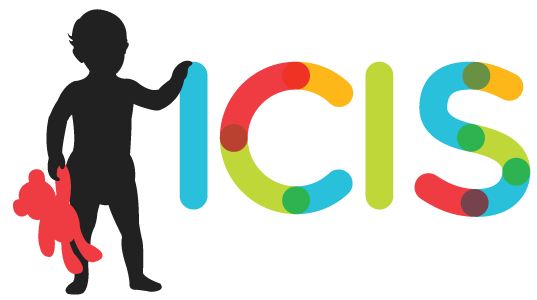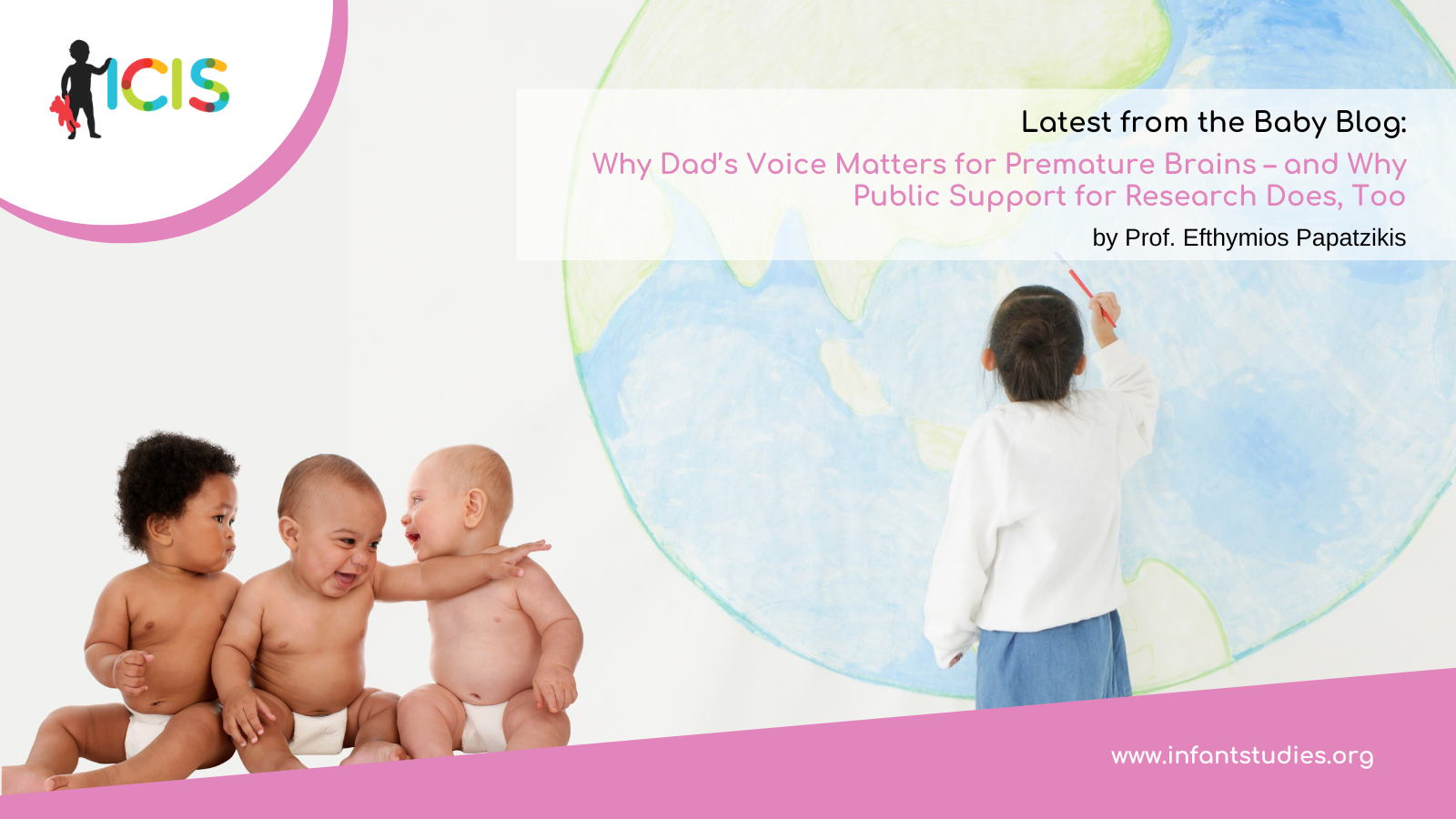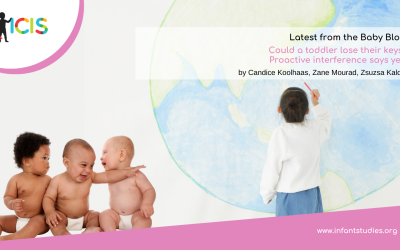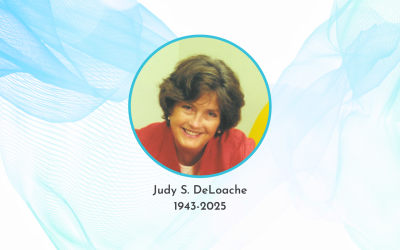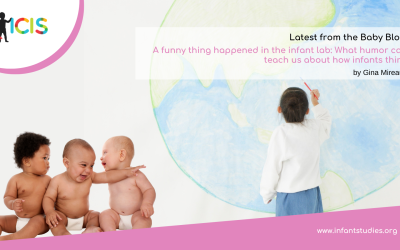The big picture
Thanks to modern neonatal care, more preterm babies are surviving than ever before. Yet more than thirteen million babies worldwide are still born early each year, and many spend their first days or weeks in neonatal intensive-care units (NICUs) ([1]; [2]). Being born early can place children at higher risk for long-term challenges with movement, attention, and behavior ([3]; [4]; [5]).
Alongside medicines when they are needed (e.g., [6]), researchers have been testing gentle, non-drug approaches that can soothe and support development – like carefully structured sounds (white noise, heartbeat recordings, and other environmental sounds) that help stabilize sleep and reduce stress ([10]; [11]). Music – whether passively listened to or used in a therapeutic way ([12]-[15]) – has also been linked to better physiological regulation and emotional well-being in infants, with longer-term benefits for mental health and social inclusion ([16]; [17]).
Because premature infants are extra sensitive to noise, sound in the NICU has to be handled with care: average levels outside the incubator should stay around 45–50 dB, with brief peaks below 65 dB ([18]; [19]). And none of this replaces the power of everyday bonding. Early, sensitive parent–infant interactions set the stage for healthy brain development – but those interactions can be harder to achieve after a stressful or traumatic birth ([20]; [21]). With that context in mind, our team asked a simple question with big stakes: Do a caregiver’s relationship to the baby (kinship) and the pitch of their voice (which tends to be lower in men and higher in women) change how a preterm infant’s brain responds to singing? To find out, we created a precision-music medicine protocol designed specifically for fragile newborns [22].
What we did
We ran a small, carefully controlled study in the NICU. 30 very-preterm infants (born at or before 32 weeks gestation) took part. In the experimental group (15 infants), over four consecutive days, each baby experienced the same short, 11.5-minute “listening session”, but the singer changed from day to day: father, mother, a male music therapist, and a female music therapist – in randomized order. That let us tease apart two things at once: kinship (parent vs. non-parent) and voice type (typically lower-pitched male voices vs. higher-pitched female voices). Each session included quiet periods for comparison and two kinds of sounds: a single musical note and a lullaby. While the babies listened, we recorded their brain activity using an infant-friendly electroencephalography (EEG) set up. We focused on the “delta” brainwaves range – slow brain waves linked to cortical maturation in premature infants – because it is a useful window into how the brain is organizing itself at this stage.
What we found
In our preliminary report published in Plos One journal [22], showed that mothers’ singing tended to evoke strong slow-wave responses under most conditions. But during the lullaby – a richer, more complex sound – father’ singing produced the strongest average response, followed by the male music therapist, then the mother, and then the female music therapist.
When we analyzed the full cohort of all 15 infants in the experimental group, the overall pattern held. The lullaby prompted especially robust slow-wave activity, and paternal singing again came out on top. To zero in on whether this had more to do with voice type than the specific people, we grouped male voices (father + male therapist) and female voices (mother + female therapist). Male voices elicited significantly higher slow-wave (delta) activity during the lullaby condition even in this case. In everyday terms: a lower-pitched lullaby seemed to sync more strongly with these babies’ developing brain rhythms.
Of course, this is a small study, so we should be cautious. But the results suggest that both the complexity of the sound (like a full lullaby) and the voice’s pitch can shape how a very-preterm infant’s brain responds.
Why this matters for families
These findings push back on the idea that only a mother’s voice “counts” in early interventions. Certainly, mothers remain essential – their voices reliably supported strong brain responses under simpler sound conditions, but fathers’ singing – especially a real lullaby – may offer a unique boost.
What could this look like in practice? We need to start inviting fathers in NICUs more often and more systematically, where bonding can be interrupted by medical needs. In these terms, structured paternal singing may help spark healthy brain rhythms and strengthen father–infant bonding and later attachment right from the start. Furthermore, when a mother cannot sing on a given day – because of medical recovery, logistics, or simply exhaustion – a father’s lullaby can serve as a powerful stand-in, helping maintain consistent, meaningful sensory input for the baby. For mothers who are singing most often, it can also help to experiment with a slightly lower pitch range or a slower tempo to see whether it better matches the baby’s calm, slow rhythms, especially during lullabies. Remember: sound levels in the NICU must stay gentle and safe, and nothing replaces nurturing contact and responsive caregiving. Singing is one supportive tool among many.
Why public funding also matters
This work was possible because of hospital/state support – the kind of public investment that lets teams build safe, family-centered protocols and bring advanced tools to the bedside. Findings like ours, therefore, do not just refine how we think about early bonding. They point to practical changes that national and international health policies can encourage, such as expanding paternal leave and making room for father-infant co-regulation in the earliest days.
We should also mention that studies like this are careful and resource intensive. We used infant-grade EEG, a data-cleaning process tailored to fragile signals, and a study design where each baby experienced every experimental condition so we could spot real differences with a small group. That approach is efficient – it squeezes more clarity out of fewer participants – but it only works when public funding supports skilled clinician-scientist teams, specialized equipment, and the time needed to do the work right (ideally including follow-up as children grow).
Without that broader public infrastructure, questions at the intersection of sound, relationships, and early brain development would remain unanswered, and precision, family-centered care underpowered. Therefore, our research and findings, we believe, make a strong case for continued public stewardship: even modest investments in precision, family-focused neonatal care can generate knowledge and insights that improve care now and reduce costs later – by lowering the burden of neurodevelopmental difficulties across childhood. In short, public investment pays off twice – first by protecting fragile beginnings and again by strengthening the society those children will help build.
References
[1] Bradley, E., Blencowe, H., Moller, A. B., et al. (2025). Born too soon: Global epidemiology of preterm birth and drivers for change. Reproductive Health, 22(Suppl. 2), 105. https://doi.org/10.1186/s12978-025-02033-x
[2] Cheong, J. L., Spittle, A. J., Burnett, A. C., Anderson, P. J., & Doyle, L. W. (2020). Have outcomes following extremely preterm birth improved over time? Seminars in Fetal & Neonatal Medicine, 25(3), 101114. https://doi.org/10.1016/j.siny.2020.101114
[3] Camerota, M., & Lester, B. M. (2025). Neurobehavioral outcomes of preterm infants: Toward a holistic approach. Pediatric Research, 97(5), 1475–1480. https://doi.org/10.1038/s41390-024-03505-9
[4] Song, I. G. (2023). Neurodevelopmental outcomes of preterm infants. Clinical and Experimental Pediatrics, 66(7), 281–287. https://doi.org/10.3345/cep.2022.00822
[5] Twilhaar, E. S., Wade, R. M., de Kieviet, J. F., van Goudoever, J. B., van Elburg, R. M., & Oosterlaan, J. (2018). Cognitive outcomes of children born extremely or very preterm since the 1990s and associated risk factors: A meta‐analysis and meta‐regression. JAMA Pediatrics, 172(4), 361–367. https://doi.org/10.1001/jamapediatrics.2017.5323
[6] Juul, S. E., Comstock, B. A., Wadhawan, R., Mayock, D. E., Courtney, S. E., Robinson, T., … Heagerty, P. J. (2020). A randomized trial of erythropoietin for neuroprotection in preterm infants. New England Journal of Medicine, 382(3), 233–243.
[7] Rohmah, I., Mukminin, M. A., Hasan, F., Romadlon, D. S., Chang, K. M., Chen, K. H., & Chiu, H. Y. (2025). Comparative effects of nonpharmacological interventions on sleep-wake states among preterm infants in neonatal intensive care units: A systematic review and network meta-analysis. Intensive and Critical Care Nursing, 91, 104168. https://doi.org/10.1016/j.iccn.2025.104168
[8] Shen, Q., Huang, Z., Leng, H., Luo, X., & Zheng, X. (2022). Efficacy and safety of non-pharmacological interventions for neonatal pain: An overview of systematic reviews. BMJ Open, 12(9), e062296. https://doi.org/10.1136/bmjopen-2022-062296
[9] Sofologi, M., Pliogou, V., Bonti, E., Efstratopoulou, M., Kougioumtzis, G. A., Papatzikis, E., … & Papantoniou, G. (2022). An investigation of working memory profile and fluid intelligence in children with neurodevelopmental difficulties. Frontiers in psychology, 12, 773732. https://doi.org/10.3389/fpsyg.2021.773732
[10] Zhang, Q., Huo, Q., Chen, P., Yao, W., & Ni, Z. (2024). Effects of white noise on preterm infants in the neonatal intensive care unit: A meta-analysis of randomised controlled trials. Nursing Open, 11(1), e2094. https://doi.org/10.1002/nop2.2094
[11] Zhang, S., & He, C. (2023). Effect of the sound of the mother’s heartbeat combined with white noise on heart rate, weight, and sleep in premature infants: A retrospective comparative cohort study. Annals of Palliative Medicine, 12(1), 11120–11120.
[12] Jaschke, A. C., Papatzikis, E., & Haslbeck, F. B. (2025). Medical Neurohumanities: Sharing Insights from Medicine, Neuroscience, and Music in Paediatric Care. Frontiers in Neuroscience, 19, 1648030. https://doi.org/10.3389/fnins.2025.1648030
[13] Papatzikis, E., Agapaki, M., Selvan, R. N., Hanson-Abromeit, D., Gold, C., Epstein, S., … Pandey, V. (2024). Music medicine and music therapy in neonatal care: A scoping review of passive music listening research applications and findings on infant development and medical practice. BMC Pediatrics, 24(1), 829.
[14] Yakobson, D., Gold, C., Beck, B. D., Elefant, C., Bauer-Rusek, S., & Arnon, S. (2021). Effects of live music therapy on autonomic stability in preterm infants: A cluster-randomized controlled trial. Children, 8(11), 1077. https://doi.org/10.3390/children8111077
[15] Haslbeck, F. B., Jakab, A., Held, U., Bassler, D., Bucher, H. U., & Hagmann, C. (2020). Creative music therapy to promote brain function and brain structure in preterm infants: A randomized controlled pilot study. NeuroImage: Clinical, 25, 102171. https://doi.org/10.1016/j.nicl.2020.102171
[16] Agapaki, M., Pinkerton, E. A., & Papatzikis, E. (2022). Music and neuroscience research for mental health, cognition, and development: Ways forward. Frontiers in Psychology, 13, 976883. https://doi.org/10.3389/fpsyg.2022.976883
[17] Papatzikis, E., & Rishony, H. (2022). What is music for neuroplasticity?: Combined value on infant development and inclusion. In Rethinking inclusion and transformation in special education (pp. 160-177). IGI Global Scientific Publishing. https://doi.org/10.4018/978-1-6684-4680-5.ch010
[18] Almadhoob, A., & Ohlsson, A. (2020). Sound reduction management in the neonatal intensive care unit for preterm or very low birth weight infants. The Cochrane Database of Systematic Reviews, 1(1), CD010333. https://doi.org/10.1002/14651858.CD010333.pub3
[19] Smith, S. W., Ortmann, A. J., & Clark, W. W. (2018). Noise in the neonatal intensive care unit: A new approach to examining acoustic events. Noise & Health, 20(95), 121–130. https://doi.org/10.4103/nah.NAH_53_17
[20] Shaw, R. J., Givrad, S., Poe, C., Loi, E. C., Hoge, M. K., & Scala, M. (2023). Neurodevelopmental, mental health, and parenting issues in preterm infants. Children, 10(9), 1565. https://doi.org/10.3390/children10091565
[21] Boissel, L., Pinchaux, E., Guilé, M., Corde, P., Crovetto, C., Diouf, M., Mariana, C., Meynier, J., Picard, C., Scoury, D., Cohen, D., Benarous, X., Viaux-Savelon, S., & Guilé, J. M. (2022). Development and reliability of the coding system evaluating maternal sensitivity to social interactions with 34- to 36-week postmenstrual age preterm infants. Frontiers in Psychiatry, 13, 938482. https://doi.org/10.3389/fpsyt.2022.938482
[22] Papatzikis E., Dimitropoulos K., Tataropoulou K., Kyrtsoudi M., Pasoudi E., O’Toole JM., et al. (2025) The father’s singing voice may impact premature infants’ brain more than their mother’s: A NICU single-arm exploratory study protocol and preliminary data on a singing and EEG framework based on the fundamental frequency of voice and kinship. PLoS One 20(8): e0328211. https://doi.org/10.1371/journal.pone.0328211
About the Author

Prof. Efthymios Papatzikis
Canadian University Dubai, UAE
Prof. Efthymios Papatzikis specializes in the scientific crossroad of Neuroscience, Neonatology and Medical Psychology. He holds one PhD in Music Psychology and Development and a second PhD in Biological and Medical Psychology (Biomedical Imaging). His work focuses on understanding brain development during the first 1500 days of life, emphasizing precision medicine in a family-centered context. He has published in major journals in the field (e.g. JAMA Pediatrics, BMC Pediatrics, PlosOne) and engaged as a member or collaborator with important professional bodies and international authorities around the world including the ICIS, the WHO, and the FIT’NGroup. He currently holds a Professorship at the Canadian University Dubai, UAE, and Senior Research Fellow at the NICU of the ‘Panagiotis and Aglaia Kyriakou’ Hospital in Athens, Greece.
